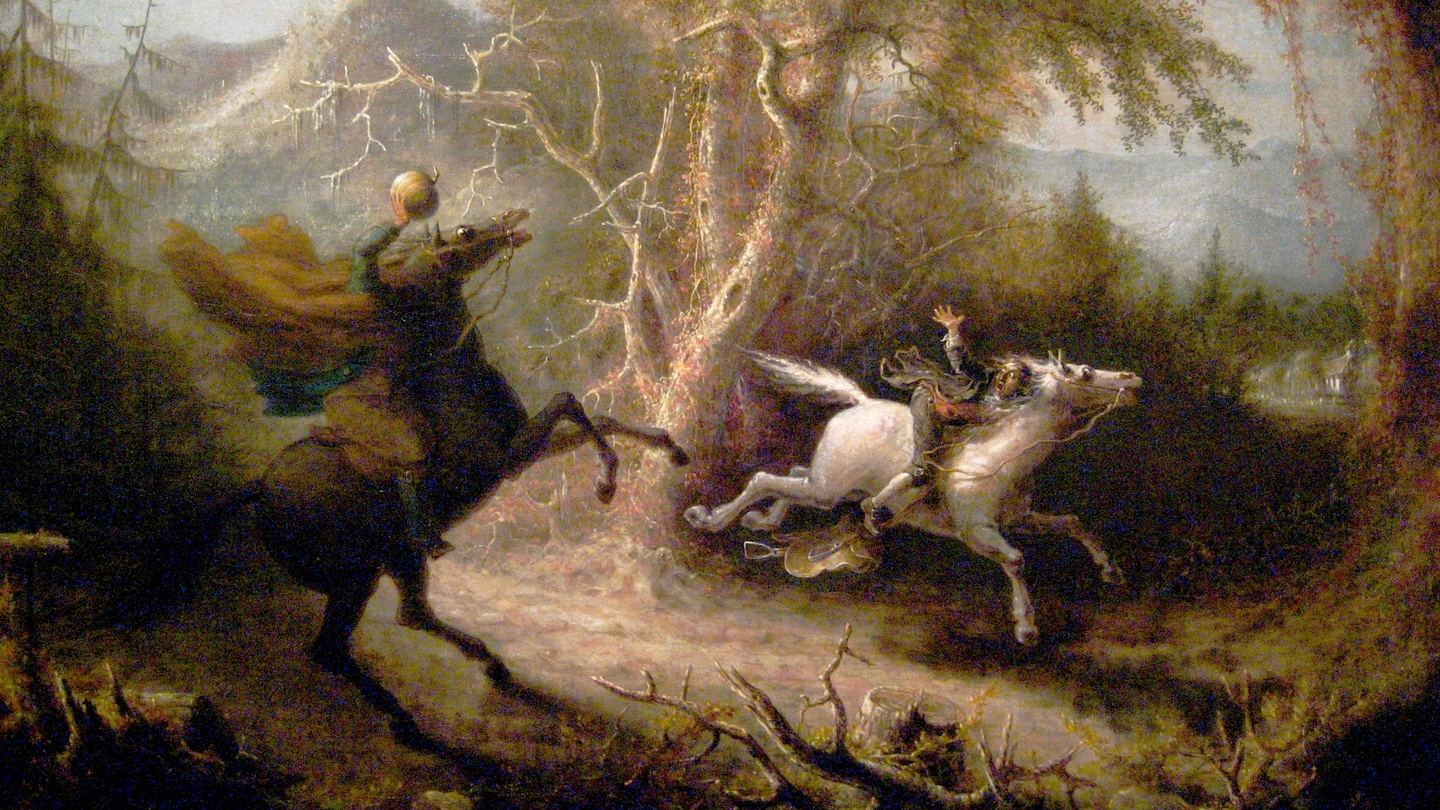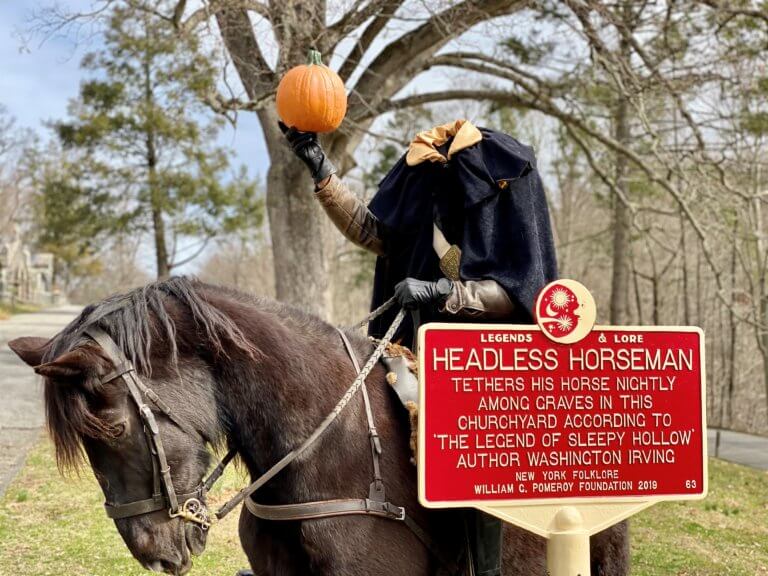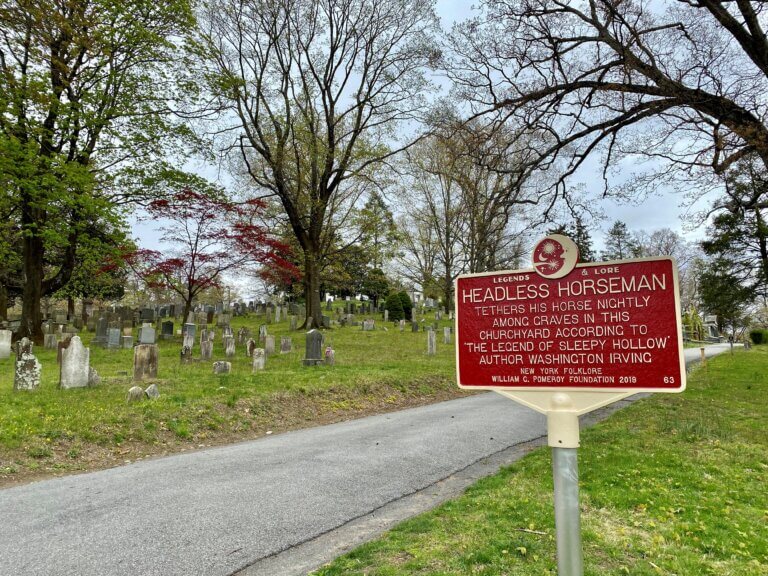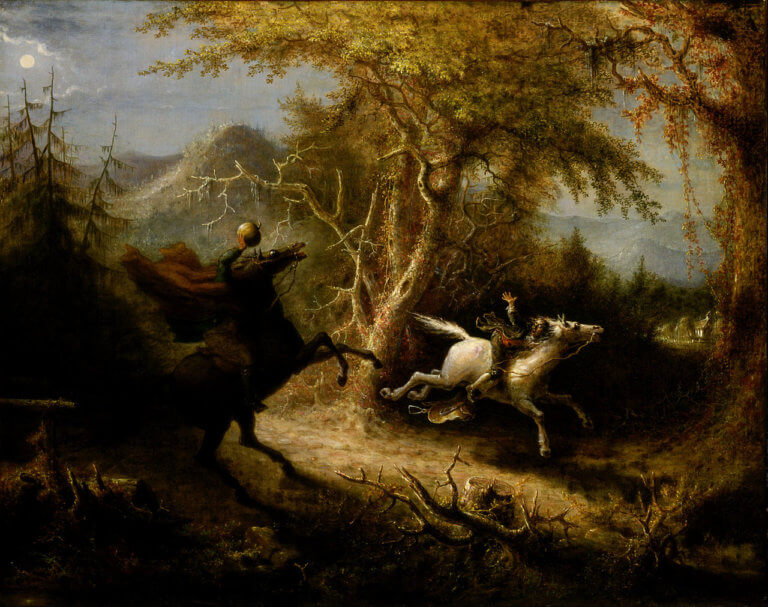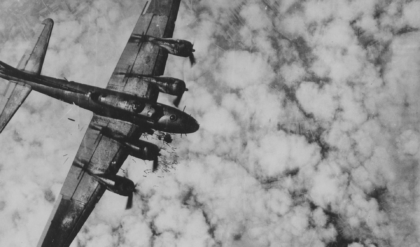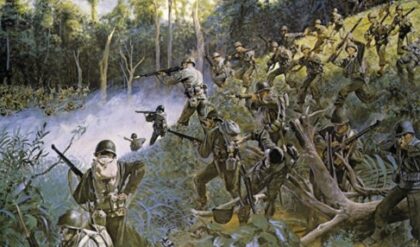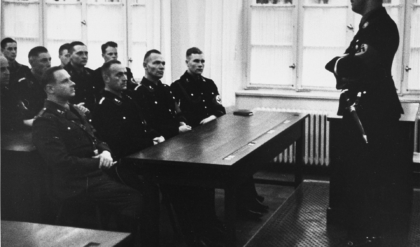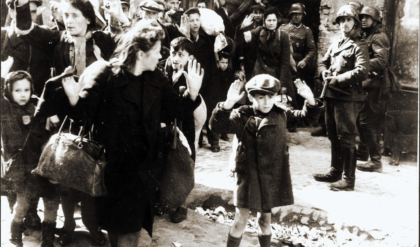HEADLESS HORSEMAN TETHERS HIS HORSE NIGHTLY AMONG GRAVES IN THIS CHURCHYARD ACCORDING TO ‘THE LEGEND OF SLEEPY HOLLOW’ AUTHOR WASHINGTON IRVING NEW YORK FOLKLORE WILLIAM G. POMEROY FOUNDATION 2019
Famously described as the haunting antagonist in author Washington Irving’s The Legend of Sleepy Hollow, the Headless Horseman has captured imaginations for generations.
The Legend of Sleepy Hollow embarks on the tale of Ichabod Crane, a skittish schoolteacher who tries to woo a wealthy landowner’s daughter, Katrina Van Tassel. Crane’s plans are spoiled by the raucous and brawny Brom Bones. In the story, Bones poses as the Headless Horse in a devious plot to scare away Ichabod Crane.
The Headless Horseman, sometimes known as the Galloping Hessian, is portrayed with a pumpkin (often a jack-o-lantern) while riding a black horse. The story goes that the Headless Horseman is the ghost of a Hessian soldier who was decapitated by canon fire during the Revolutionary War.
While this frightening figure continues to live on in the pages of The Legend of Sleepy Hollow, local lore claims that the Headless Horseman is buried in Sleepy Hollow Cemetery in Sleepy Hollow, New York. The legend says the ghost tethers his horse to graves in the churchyard, only to set out at night in search of his missing head.
Irving first published The Legend of Sleepy Hollow between 1819 and 1820 in his collection of essays, The Sketch Book of Geoffrey Crayon, Gent. Set in Dutch country of the Hudson Valley, this iconic 19th century story has been told and retold countless times for generations in books, songs, movies and on stage.
A number of the local landmarks described in Irving’s story are visible in the community of Sleepy Hollow. The story’s influence prompted the village of North Tarrytown to officially change its name to Sleepy Hollow in 1996.
While myths about headless horsemen can be traced to the Middle Ages, the infamous Headless Horseman from The Legend of Sleepy Hollow has become a fixture in American folklore.
